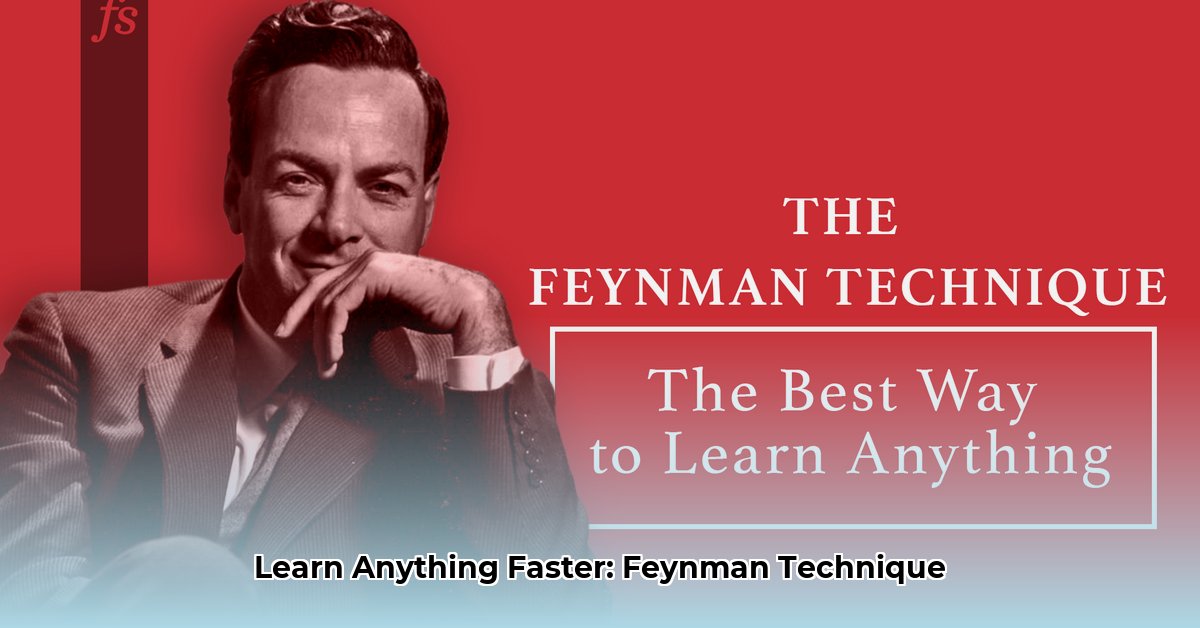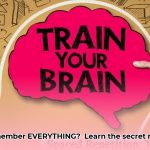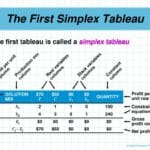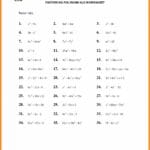Do you ever feel like you’re putting in the study hours but not truly grasping the material? Do you wish you could learn faster and retain information for longer? You’re not alone! This guide introduces the Feynman Technique, a highly effective learning method championed by the brilliant physicist Richard Feynman. We’ll break it down step-by-step with clear instructions and practical examples. Discover how to use this technique to supercharge your learning, boost your memory, and enhance your brain’s information processing capabilities. Get ready to revolutionize your learning journey—let’s dive in!
The Feynman Technique: The Ultimate Learning Accelerator
Want to become a master of any subject with speed and efficiency? Then prepare to embrace the Feynman Technique—a transformative learning method developed by Nobel laureate Richard Feynman. This technique will redefine how you acquire and remember information. It’s not simply about rote memorization; it’s about profoundly understanding core concepts and truly mastering a subject.
Unveiling the Secret: The Cognitive Power of the Feynman Technique
The Feynman Technique revolves around explaining a concept as if you’re teaching it to someone with zero prior knowledge—a friend, a family member, or even yourself. While seemingly straightforward, this act compels you to dissect complex ideas into manageable, easily digestible pieces. In doing so, you’ll expose your knowledge gaps and fortify your grasp on the subject. Think of it as performing a comprehensive diagnostic check and simultaneously upgrading your brain. You’re not just passively absorbing information; you’re actively constructing it. How does simplifying complex ideas lead to improved long-term retention?
Your Step-by-Step Guide to Mastery
Here’s how to harness the Feynman Technique to conquer any subject:
Step 1: Define Your Focus. Select a specific concept you want to learn. Precision is key! Avoid trying to absorb an entire textbook chapter at once. Instead, concentrate on a single, key idea, such as “Newton’s Laws of Motion” rather than “Classical Mechanics.”
Step 2: Explain It Simply (As If Teaching a Child!). Imagine you’re explaining the chosen concept to a ten-year-old (or anyone completely unfamiliar with the topic). Write out your explanation. Use everyday language, avoid jargon, and maintain clarity. This elegantly exposes weaknesses in your understanding. You might find yourself thinking, “I’m not entirely sure about that part,” and that’s perfectly fine! It signals an area requiring further attention.
Step 3: Uncover the Truth: Identify Knowledge Gaps. Now, scrutinize your explanation. Did you stumble anywhere? Were there concepts you struggled to clarify or explain simply? These are your knowledge gaps—the areas where your understanding is incomplete. Revisit your textbook, notes, or other resources, and diligently fill those gaps. This might involve rereading sections, researching definitions, or watching instructional videos.
Step 4: Refine and Perfect Your Explanation. Revise your explanation, making it even clearer and more concise. This refinement process strengthens your understanding and promotes long-term retention. You might need to repeat steps 2 and 3 several times—that’s perfectly normal. Consider using diagrams, charts, or analogies to enhance clarity.
The Science Behind the Success
The effectiveness of the Feynman Technique stems from its skillful application of several powerful learning principles:
- Active Recall: Unlike passively rereading material, this method requires you to actively retrieve and reconstruct information, which strengthens memory.
- Spaced Repetition: By revisiting and refining your explanations over time, you reinforce learning and combat the “forgetting curve” that causes us to forget learned material much sooner than expected.
- Metacognition: You become acutely aware of your own level of understanding (or lack thereof), allowing you to focus your learning efforts where they are most needed.
Beyond Textbooks: Real-World Applications
Don’t confine the Feynman Technique to academic textbooks. This versatile method can help you master anything—learn coding, acquire a new language, play a musical instrument, or even perfect your pizza-making skills! The possibilities are endless with consistent practice and thoughtful self-reflection.
Overcoming Challenges
While remarkably effective, the Feynman Technique does demand effort. It can be time-consuming initially, particularly if you’re unfamiliar with active learning. Don’t be discouraged! Start small, focus on one concept at a time, and celebrate your progress. Remember, the objective is genuine understanding, not speed.
Ready to Transform Your Learning?
Ready to revolutionize your learning and achieve significant progress in understanding new subjects? Integrate the Feynman Technique into your learning routine today. Begin with a small, manageable concept and witness your comprehension and retention soar. You’ll be amazed at how quickly and effectively you can learn and remember new information! What specific concept will you tackle first using this technique?
Potential Pitfalls and Strategies for Success
While the Feynman Technique is highly effective, some learners may encounter specific challenges. One common obstacle is the time investment required for detailed explanation and revision. Some individuals may struggle to articulate complex concepts in simple terms. This difficulty often reveals areas that need further review. To navigate these hurdles, start with smaller, more manageable topics, and prioritize understanding over speed. Use diverse resources if necessary. Collaborating with others can also be incredibly helpful; explaining your understanding to a peer can solidify learning. Celebrate advancement and don’t hesitate to adapt your approach as you gain experience. Remember, the iterative nature of the technique is one of its strengths; it’s designed to refine your understanding over time.
Adapting the Feynman Technique for Diverse Learning Preferences
Core Principles:
- The Feynman Technique hinges on simplification, active recall, and iterative refinement.
- Tailoring the technique to different learning styles boosts its effectiveness.
- Identifying and addressing knowledge gaps is critical for success.
- Embracing iterative learning and a growth mindset are essential for long-term mastery.
The Essence of the Feynman Technique
The Feynman Technique transcends rote memorization; it’s about achieving a genuine and deep comprehension of a concept. Imagine explaining a challenging physics problem to a five-year-old. That’s the core idea. You deconstruct complex ideas into simple, relatable terms. This process uncovers gaps in your understanding, ultimately enhancing the active learning process. It serves as a powerful tool for mastering any subject, but its application can be modified to resonate with various learning styles.
A Flexible Approach: Tailoring the Technique to Learning Styles
The adaptability of the Feynman Technique is one of its greatest strengths. It’s not a rigid, one-size-fits-all method. Instead, its steps can be fine-tuned to accommodate individual learning preferences. Let’s explore how to adapt it for different types of learners:
1. Visual Learners:
Visual learners excel when they can see information. For these learners, adapting the Feynman Technique involves incorporating visual aids. Instead of solely writing explanations, create diagrams, mind maps, or flowcharts. Draw illustrations and use color-coding. Transform your explanations into visual narratives.
2. Auditory Learners:
Auditory learners learn most effectively by hearing information. These learners should record themselves explaining the concept and then listen back, identifying areas that require clarification. They can also practice explaining the material aloud to a friend or even a pet! The act of verbalizing the concept reinforces learning.
3. Kinesthetic Learners:
Kinesthetic learners learn best through hands-on activities. For them, tailoring the Feynman Technique means incorporating physical actions. This could involve building models, using manipulatives, or acting out the concept. The key is to find a physical way to interact with the material.
4. Reading/Writing Learners:
These learners find comfort in reading and writing. They can enhance the Feynman Technique by extensively writing their explanations, concentrating on clarity and precision. They can rewrite and revise their explanations multiple times, strengthening their understanding with each iteration.
The Core Steps (Customized):
Regardless of learning style, the core steps remain consistent:
- Choose a Concept: Select a specific concept or topic that you want to understand.
- Explain It Simply: Write a simplified explanation, as if teaching someone unfamiliar with the subject. Utilize analogies. This step will expose your knowledge gaps. Adapt your explanation to align with your chosen learning style.
- Identify Gaps: Review your explanation. Where did you struggle? Where did your explanation become unclear? This highlights areas where you need to revisit your source material.
- Refine and Repeat: Re-study the areas where you struggled. Revise your explanation. Repeat steps 2 and 3 until you can explain the concept clearly and concisely.
Making It Work for You
When personalized, the Feynman Technique becomes a potent and effective learning tool. It’s not solely about the method itself, but about your individual understanding and the application of the technique to your learning approach. Embrace experimentation; identify what resonates with you. Remember, learning is a journey, not a race. Mastering complex subjects demands patience and sustained effort.
The Feynman Technique for Rapid Skill Development in Professional Environments
Essential Points:
- This technique fosters improved knowledge transfer by focusing on simplification and active recall.
- The approach aids in precisely identifying knowledge gaps, leading to more targeted and effective learning.
- Success depends on adapting the method to individual learning styles.
- Supplementing the Feynman Technique with peer review and feedback can amplify its effectiveness.
- Metacognition—thinking about your own thinking processes—is fundamental to the successful application of this method.
Leveraging the Feynman Technique in the Workplace
Professionals across diverse sectors can harness its power to accelerate skill development. It’s about converting complex ideas into easily understandable information. This method enhances both comprehension and retention.
Four Steps to Workplace Mastery
The Feynman Technique involves a straightforward four-step process:
- Select a Concept: Choose a specific skill or topic you want to master. Be precise; it’s challenging to manage overly broad topics effectively.
- Explain It Simply: Pretend you’re instructing someone with no prior knowledge of the subject. Write the explanation using simple language, avoiding technical jargon.
- Pinpoint Knowledge Gaps: Scrutinize your explanation. Where did you falter? What concepts remained unclear?
- Refine and Simplify: Revisit the source material to address identified gaps. Then, refine your explanation until it is clear, concise, and complete.
Advantages in Professional Contexts
The Feynman Technique offers several advantages in professional settings:
- Improved Retention: The act of explaining reinforces learning and improves memory.
- Enhanced Understanding: Simplifying complex ideas forces a deeper understanding.
- Identification of Weaknesses: Pinpointing knowledge gaps enables focused learning and skill development.
- Increased Confidence: Subject mastery boosts self-assurance and preparedness.
Limitations and Considerations
While highly effective, the Feynman Technique has limitations. It might not be ideal for highly visual subjects or those requiring intricate details. Also, relying solely on self-assessment can be difficult. Consider seeking feedback from peers or mentors.
Practical Applications: Real-World Examples
Consider learning a new software program. After completing a training module, use the Feynman Technique to explain a specific function to a colleague. Identify areas where your explanation lacks precision; these are your weak points. Review the documentation, then explain the function again, this time with enhanced clarity.
This approach can be applied to project management, financial modeling, or learning a new programming language. The Feynman Technique is adaptable to various professional skills. How can you apply the Feynman Technique to your current professional development goals?
Boosting Your Learning
While the Feynman Technique is a powerful tool on its own, it’s most effective when combined with other learning strategies. Consistent practice, active recall exercises, and feedback from others can significantly enhance its benefits. Aim to build a robust and adaptable learning framework. Remember, consistent effort is essential for success.
Optimizing the Feynman Technique for Enhanced Knowledge Retention in Complex Subjects
Key Insights:
- The Feynman Technique significantly improves understanding and retention of complex information.
- Active recall and iterative refinement are vital for success.
- Identifying knowledge gaps is key, as it’s where significant learning occurs.
- Optimizing the technique involves adapting it to individual learning styles and using supplementary learning aids.
- Qualitative evidence strongly supports its effectiveness, although further quantitative research is needed.
Mastering Complexity with the Feynman Technique
Named after the renowned physicist Richard Feynman, this method offers a structured process for solidifying your understanding and memory. The central concept is straightforward: explain the material as if you were teaching a child. This simplification process reveals any gaps that exist in your own understanding.
Four Steps to Solid Understanding
The Feynman Technique includes four essential steps:
- Choose a Concept: Select a specific concept you want to understand. Start with smaller, manageable pieces of information rather than tackling the entire subject at once.
- Explain It Simply: Pretend you’re teaching the concept to someone with no prior knowledge. Write your explanation—this is crucial. Use simple language and analogies, avoiding technical jargon.
- Identify Knowledge Gaps: Review your explanation. Where did you stumble? Did you use vague terminology? These are your knowledge gaps. Return to your source material and clarify anything you didn’t fully understand.
- Refine and Simplify: Revise your explanation based on the gaps you identified. Make it even clearer and more concise. Repeat steps 2 and 3 until your explanation is perfectly clear and simple. You’ve mastered the concept when you can explain it effortlessly.
Enhancing the Feynman Technique for Exceptional Results
The power of the Feynman Technique lies in its active recall and iterative nature. But you can enhance it further by:
- Visual Aids: Diagrams, mind maps, and other visual tools can clarify complex ideas.
- Collaborative Learning: Teaching the concept to someone else provides valuable feedback and identifies any remaining knowledge gaps. What works for one learner may not work for another, exposing areas needing additional clarity. Group learning can be particularly beneficial.
- Adapting to Your Learning Style: Are you a visual, auditory, or kinesthetic learner? Tailor your explanations accordingly. Experiment to find what works best for you.
- Iterative Review: Refine your explanations regularly to reinforce your understanding and prevent forgetting.
- Breaking Down Complex Topics: Don’t try to explain an entire chapter at once. Break down large topics into smaller, more digestible concepts.
Benefits of the Optimized Feynman Technique
By integrating these strategies, you’ll experience enhanced knowledge retention, improved problem-solving s
- Understand the Dunning-Kruger Effect: Why Incompetent People Think They’re Experts: Gain Self-Awareness - August 1, 2025
- Ignaz Semmelweis: The Doctor Fired for Handwashing: A Public Health Tragedy - August 1, 2025
- Unlock Your Memory: Spaced Repetition: The Scientific Trick to Remembering Information Forever: Learn Effortlessly - August 1, 2025














